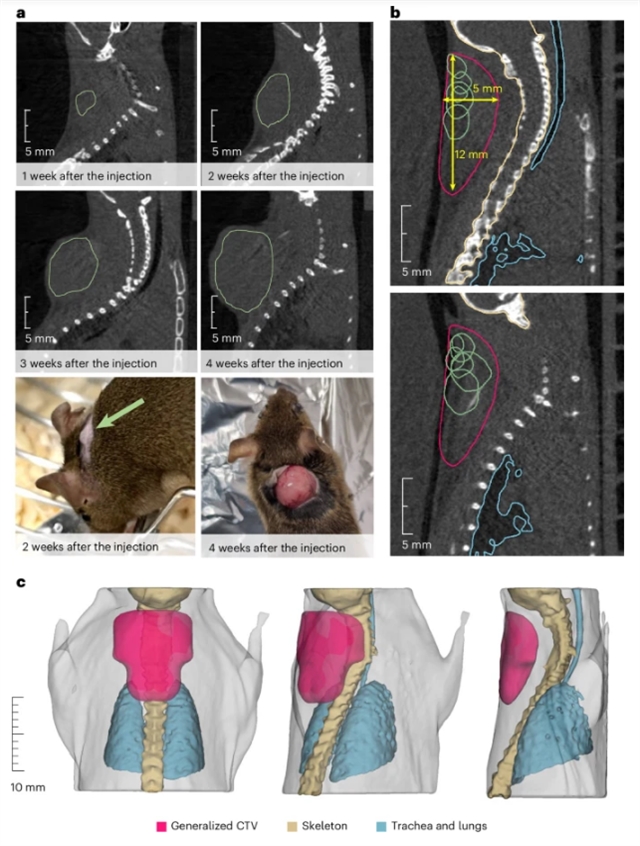
近日,德国亥姆霍兹重离子研究中心Durante, Marco团队开发了放射性离子束图像引导治疗小鼠肿瘤。相关论文发表在2025年8月19日出版的《自然—物理学》杂志上。
质子或重离子的带电粒子治疗是最有效的放射治疗技术之一,但光束范围的不确定性限制了其疗效。放射性离子束是图像引导粒子治疗的理想选择,因为经过β+衰变的主题同位素可以用正电子发射断层扫描可视化。这允许粒子在体内分布的空间定位,可与在线光束范围验证的预期剂量沉积相关联。
研究组报告了放射性11C离子束成功治疗无主导性骨肉瘤。肿瘤位于颈部,靠近脊髓,在这里,即使在光束范围内几毫米的偏差也可能导致意外的剂量沉积在脊柱和辐射诱发的脊髓病或脊髓损伤。研究组以最高剂量20 Gy同时避免瘫痪。轻度神经系统副作用与脊柱正电子发射断层扫描测量的活动相关。肿瘤体积活性的生物冲洗依赖于剂量,表明高剂量下血管损伤的潜在成分。这一实验标志着放射性离子束的未来临床应用迈出了一步。
附:英文原文
Title: Image-guided treatment of mouse tumours with radioactive ion beams
Author: Boscolo, Daria, Lovatti, Giulio, Sokol, Olga, Vitacchio, Tamara, Moglioni, Martina, Evangelista, Francesco, Haettner, Emma, Tinganelli, Walter, Graeff, Christian, Weber, Uli, Schuy, Christoph, Nitta, Munetaka, Kostyleva, Daria, Purushothaman, Sivaji, Thirolf, Peter G., Bckner, Andreas, Bortfeldt, Jonathan, Scheidenberger, Christoph, Parodi, Katia, Durante, Marco
Issue&Volume: 2025-08-19
Abstract: Charged particle therapy with protons or heavier ions is one of the most effective radiotherapy techniques, but uncertainties in the beam range can limit its efficacy. Radioactive ion beams are ideal for image-guided particle therapy because isotopes that undergo β+ decay can be visualized with positron emission tomography. This allows spatial localization of the particle distribution in vivo, which can be correlated with the expected dose deposition for online beam range verification. Here we report the successful treatment of a mouse osteosarcoma using a radioactive 11C-ion beam. The tumour was located in the neck, close to the spinal cord, where deviations of even a few millimetres in the beam range could lead to unintended dose deposition in the spine and radiation-induced myelopathy, an injury to the spinal cord. We achieved complete tumour control with the highest dose of 20Gy while avoiding paralysis. Low-grade neurological side effects were correlated to the activity measured by positron emission tomography in the spine. The biological washout of the activity from the tumour volume was dependent on the dose, indicating a potential component of vascular damage at high doses. This experiment marks a step towards future clinical applications of radioactive ion beams.
DOI: 10.1038/s41567-025-02993-8
Source: https://www.nature.com/articles/s41567-025-02993-8
